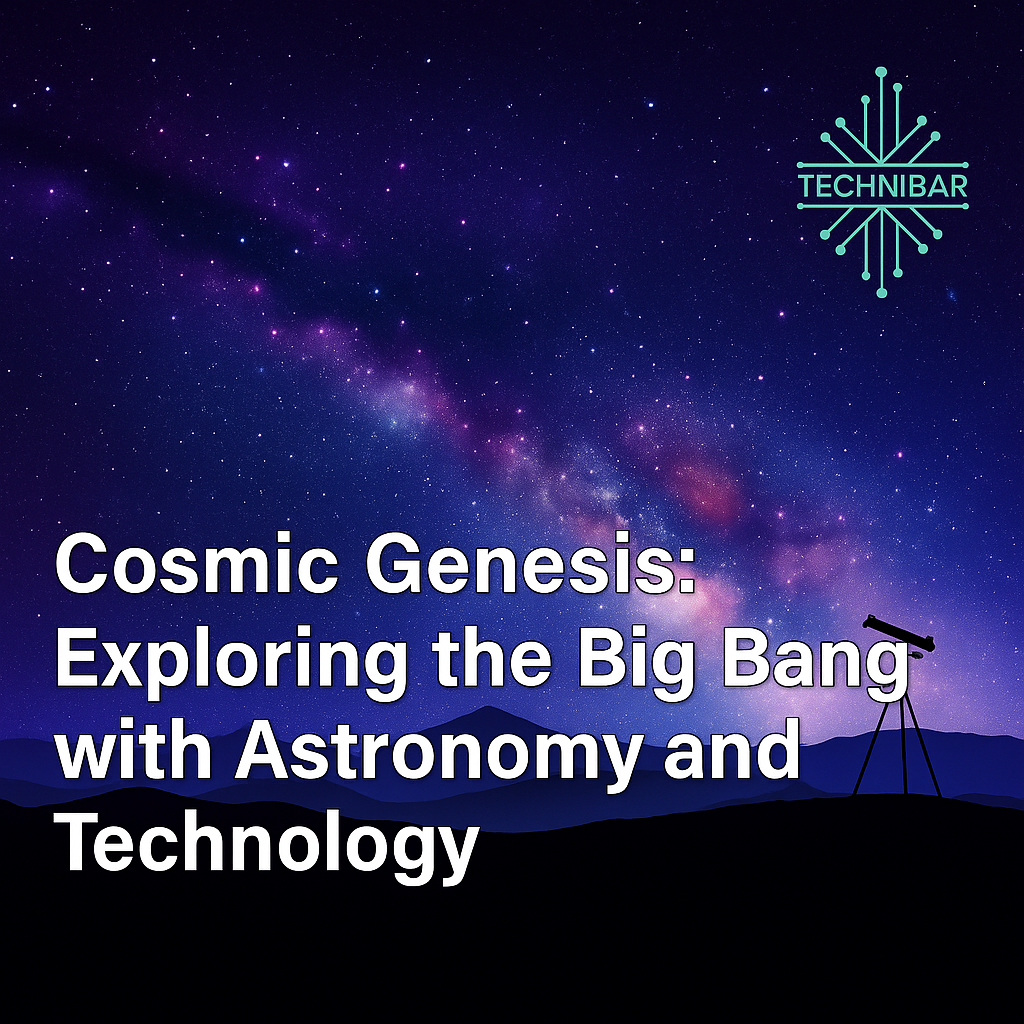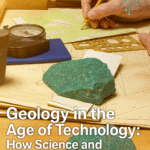The issue of the origin of the universe has always been captivating to people. Whereas earlier civilizations used myths and religious concepts to explain their existence. Nowadays a new powerful evidence based theory exists, the Big Bang Theory. This model is far more than an explosion as it explains how the observable universe was formed 13.713.8 billion years ago out of a hot, dense state and has since then been expanding and evolving to what we currently see. The Big Bang, bringing together physics, astronomy and philosophy, is one of the finest intellectual accomplishments of mankind.
Historical Background
The Big Bang Theory origin dates back to the earlier parts of the 20th century. Georges Lemaittre, a Belgian priest and physicist, also invented laws in 1927 in which he postulated that the universe started as a primordial atom. His theories became relevant as Edwin Hubble found out that the galaxies are moving away with each other which hinted at the expansion of the cosmos. General relativity offered a theory constructed later by Albert Einstein, although even Einstein at first resisted the concept of an expanding universe.
This was challenged in the mid 20th century with other theories suggesting that there was no beginning to the universe and that it always appeared the same, the Steady-State Theory. But in 1965 Arno Penzias and Robert Wilson discovered the cosmic microwave background radiation (CMB) and that gave convincing evidence to the Big Bang. Now the theory is the most acquired model of creation of space. Redshift observations being a crucial evidence of the Big Bang occurred in astronomy as well as Cosmic Microwave Background and the elemental abundance. Telescopes such as Hubble and James Webb allow astronomers to observe the past and see the galaxies that came into existence shortly after the formation of the universe.
Big Bang Scientific Proof
CMB Radiation
The first evidence of this signature came in 1965 and was discovered as a faint haze of light spread in every part of the universe, known as the cosmic microwave background which was observed subsequently by scientists. High-resolution readings made by satellites like COBE, WMAP and Planck verify the foundational strength of CMB shows that it is uniform and has tiny perturbations that have triggered the formations of galaxies.
Galaxies Redshift
Edwin Hubble revealed that far galaxies had red shifted, this is, their light being extended to longer wavelengths due to the intensifications of those galaxies. This ends the conception of an enlarged universe.
Plentiful Light Elements
The Big Bang picture is sufficiently precise to predict relative amounts of hydrogen, helium and lithium produced by primordial nucleosynthesis a few minutes after the start of time.
Large-Scale Structure of the Universe
Contemporary simulations have made great predictions that are true on the observed distributions of galaxies and thus validating the predictions of the Big Bang on the evolution of the universe.
Big Bang and technology
Technology advancement has always been involved in the study of the Big Bang. Telescopes, Satellites and particle accelerators have enabled scientists to venture deeper into cosmic origins. One of the most thrilling things is the Soap Opera impact which is the application of artificial intelligence (AI) in cosmology. Neural networks, capable of simulating quark gluon plasma, a state of matter that existed a microsecond after the Big Bang, were developed at the Vienna University of Technology by researchers. Such processes are highly complex and traditional supercomputers have difficulty computing them at scale, whereas AI hastens these calculations thanks to incorporating gauge symmetries into neural networks.
In the meantime, cooling experiments at the Large Hadron Collider (LHC) at the CERN laboratory reproduce conditions some nanoseconds after the Big Bang, colliding protons at almost the speed of light to form quarkgluon plasma. Particle collision is analyzed by high performance computing giving knowledge about the early times of matter.
Astrophysics Space observatories, like the James Webb Space Telescope (JWST) are also important as they look back at galaxies that formed soon after the Big Bang. A few hundred million decades off back of the Big Bang. Technology and the engagement of theory and observation is further done with AI and quantum simulation.
Popular awareness and misunderstanding
Although its scientific basis is highly correct, the Big Bang Theory is not always comprehended among common citizens. People tend to conceive it as an expansion in vacancy, whereas it is used to define a quickened growth of space.
Several collapse into a trap and believe that the theory predicts that the universe was inititated out of nothing. The Big Bang only remarks on the fact that the universe used to be hotter and denser, but it does not attempt to answer the question of why and how this state of events occurred.
The theory has somewhat been misrepresented by religious fundamentalists, who render it to be atheistic, and a straw man to support creationism. Interestingly, there are religious groups that accept the Big Bang as acceptable with the divine creation, and there are also those that totally denounce it.
The more speculative models, like colliding universes or universes in a supersolid vacuum, of a small fringe of “alternative cosmologists” do not have empirical support.
Philosophical Implications
The Big Bang creates highly philosophical questions. Acknowledged that space and time began with the Big Bang.
- What should it mean to ask for what was there preliminary?
- Does one thing ever really come out of nothing?
- Has the universe always had some form?
To most people, this postulates upon human understanding. Other scientists do believe that there is a chance that our mental capacities might never know ultimate origins. Still others say the mystery marks an invitation to further exploration not acceptance.
Notably, the realization of the boundaries of science does not necessarily justify supernatural explanations. Science is occupied with explanations that can be tested and put into evidence, whereas philosophy and theology deal with the questions of sense. The Big Bang therefore lies in a nexus between science, philosophy and metaphysics.
Cosmology of the Future
Studies on the origins of the cosmos are yet to be complete. There are a number of questions which are open:
- What is the difference between dark matter and dark energy and why it is all 95 percent of the universe?
- Did it really arise and how did it arise?
- What is cosmic inflationary theory, why does it tell us what happened between the Big Bang brief bout of exponential expansion?
- Does it contain multiverses or is our universe alone?
- Is quantum gravity the means to reconcile relativity and quantum mechanics to explain the earliest time of the Big Bang?
Advanced technologies like quantum computing, gravitational wave detector, and the new generation of telescope sight may be the solution to solving these riddles.
Conclusion
Big Bang theory is considered to be one of the most successful scientific theories ever constructed. Backed by the cosmic microwave background radiation, galactic redshifts, and the ratio of abundances of lighter elements it has a consistent account of how the universe got to its present various state through an hardly hot and papulated level. Space telescopes, particle accelerators and artificial intelligence enable us to duplicate and model what was in place mere moments after the universe was created. Such tools not only validate some predictions but also lead to new doors to the unfamiliar and close the circle between theory and observation. The theory is silent enough about ultimate origins. Rather it explains the increasing size and development of the universe and leaves further questions related to the universe such as metaphysics to philosophy and theology. This does not do away with wonder but rather adds to it as a reminder to humanity that the universe is a narrative but a narrative which we are just starting to explore.
FAQs
Q1. What contribution does astronomy make to this Big Bang Theory?
Galaxy redshift, the Cosmic Microwave Background, and light element abundances all give evidence in astronomy. These findings highly prove that the universe used to be extended when it was hot and dense.
Q2. What is astronomy cosmic inflation?
Cosmic inflation is a period of expansion soon after the Big Bang that was particularly quick and exponential. It gives an explanation to the large scale uniformity and structure within the universe.
Q3. What technology has done to aid astronomy in studying the Big Bang?
Big Bang predictions can be tested using space telescopes, satellites and particle accelerators.
These supercomputers also make an excellent simulation of cosmic evolution.
Q4. What are ways astronomy and technology examine dark matter and energy?
Astronomers observe them in the galaxies and in cosmic expansion.
They are examined with intensive detectors and simulations of technology.









